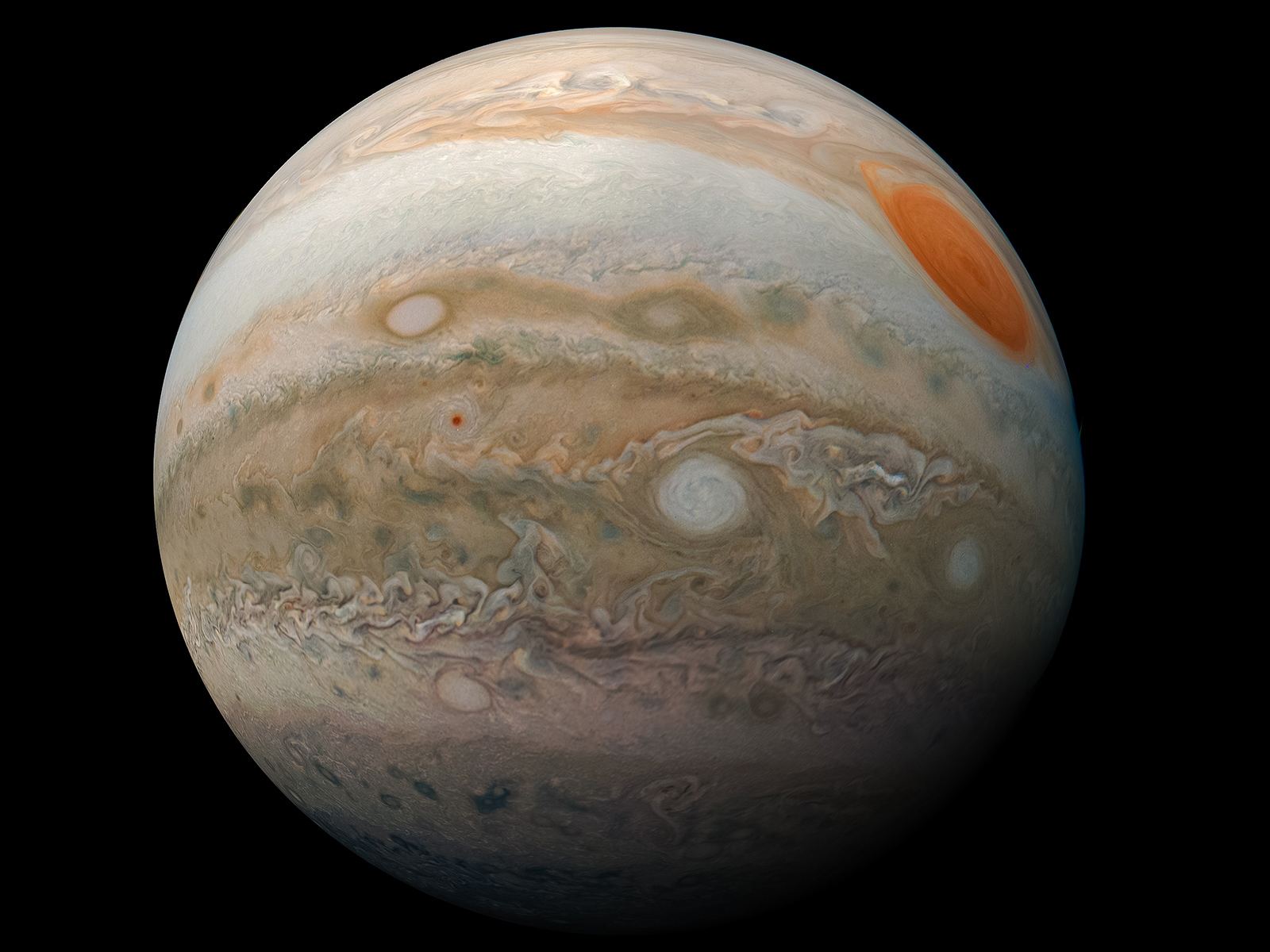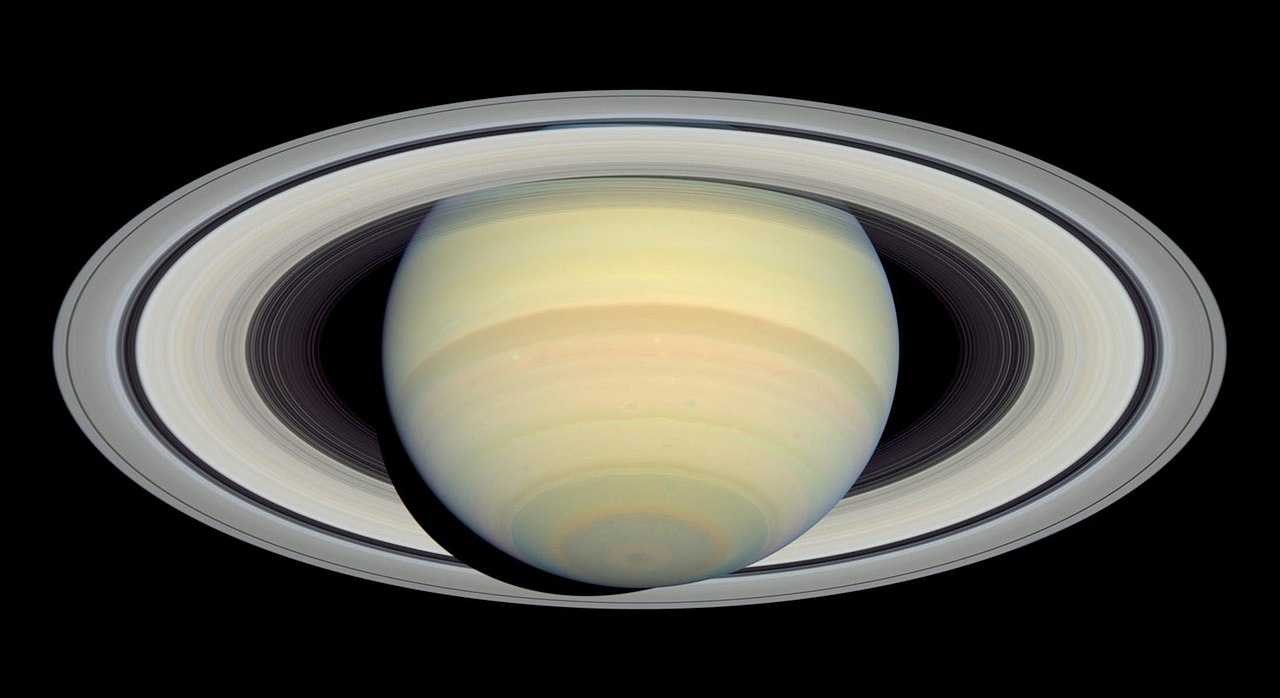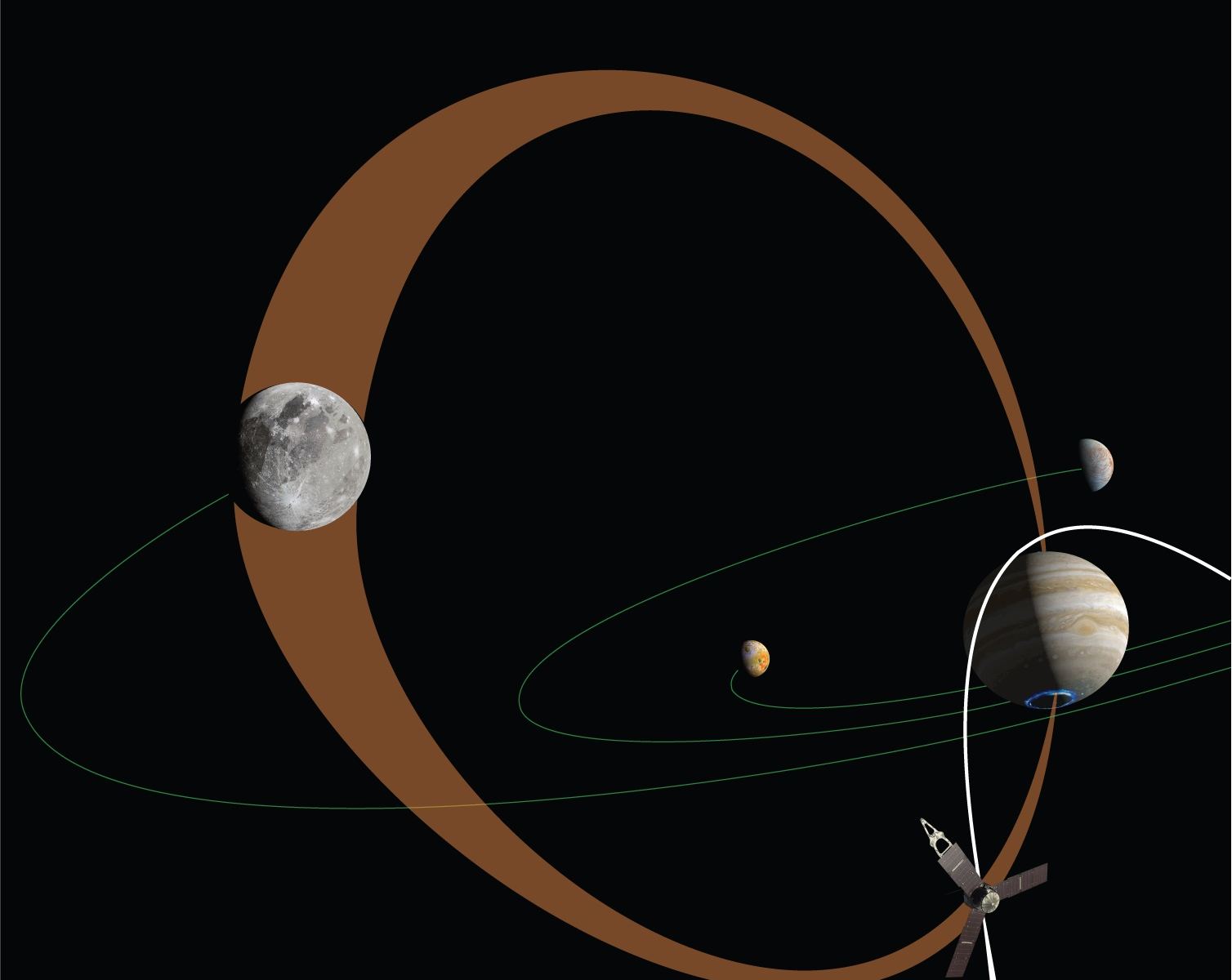In a recent study published in the Journal of High Energy Physics, two researchers from Brown University demonstrated how data from past missions to Jupiter can help scientists examine dark matter, one of the most mysterious phenomena in the universe. The reason past Jupiter missions were chosen is due to the extensive amount of data gathered about the largest planet in the solar system, most notably from the Galileo and Juno orbiters. The elusive nature and composition of dark matter continues to elude scientists, both figuratively and literally, because it does not emit any light. So why do scientists continue to study this mysterious—and completely invisible—phenomena?
Continue reading “Jupiter Missions Could Also Help Search for Dark Matter”Jupiter's Giant Moons Prevent it From Having Rings Like Saturn
When the name Saturn is uttered, what comes to mind? For most people, the answer would probably be, “its fabulous system of rings.” There’s no doubt they are iconic, but what is perhaps lesser-known is that Jupiter, Uranus, and Neptune all have ring systems of their own. However, whereas Saturn’s rings are composed mainly of ice particles (making them highly reflective), Jupiter’s rings are composed mainly of dust grains. Meanwhile, Uranus and Neptune have rings of extremely dark particles known as tholins that are very hard to see. For this reason, none of the other gas giants get much recognition for their rings.
However, the question of why Jupiter doesn’t have larger, more spectacular rings than Saturn has been bothering astronomers for quite some time. As the larger and more massive of the two bodies, Jupiter should have rings that would dwarf Saturn’s by comparison. This mystery may have finally been resolved thanks to new research by a team from UC Riverside. According to their study, Jupiter’s massive moons (aka. Jupiter’s Galilean Moons) prevented it from developing a big, bright, beautiful ring system that would put Saturn’s to shame.
Continue reading “Jupiter's Giant Moons Prevent it From Having Rings Like Saturn”JWST Also Looked Inside the Solar System, at Jupiter and its Moons

After the ‘big reveal’ earlier this week of the James Webb Space Telescope’s first full color images and spectra of the universe, the science team has now released data from closer to home. One stunning shot includes Jupiter and its moons, and there are also data from several asteroids. These latest data are actually just engineering images, designed to test JWST’s ability to track solar system targets, as well as test out how the team can produce images from the data. The quality and detail in these test images have excited the mission scientists.
Continue reading “JWST Also Looked Inside the Solar System, at Jupiter and its Moons”Jupiter is up to 9% Rock and Metal, Which Means it Ate a lot of Planets in its Youth

Jupiter is composed almost entirely of hydrogen and helium. The amounts of each closely conform to the theoretical quantities in the primordial solar nebula. But it also contains other heavier elements, which astronomers call metals. Even though metals are a small component of Jupiter, their presence and distribution tell astronomers a lot.
According to a new study, Jupiter’s metal content and distribution mean that the planet ate a lot of rocky planetesimals in its youth.
Continue reading “Jupiter is up to 9% Rock and Metal, Which Means it Ate a lot of Planets in its Youth”Juno’s Entire 42nd Flight Past Jupiter in One Amazing Mosaic

On May 23, 2022, the Juno spacecraft made another close pass of Jupiter, with its suite of scientific instruments collecting data and its JunoCam visible light camera snapping photos all the while. This close pass, called a perijove, is the 42nd time the spacecraft has swung past Jupiter since Juno’s arrival in 2016.
Continue reading “Juno’s Entire 42nd Flight Past Jupiter in One Amazing Mosaic”ESA's Juice Mission is Fully Integrated and Ready for Testing. Soon it'll fly to Space on a Mission to Jupiter's Moons
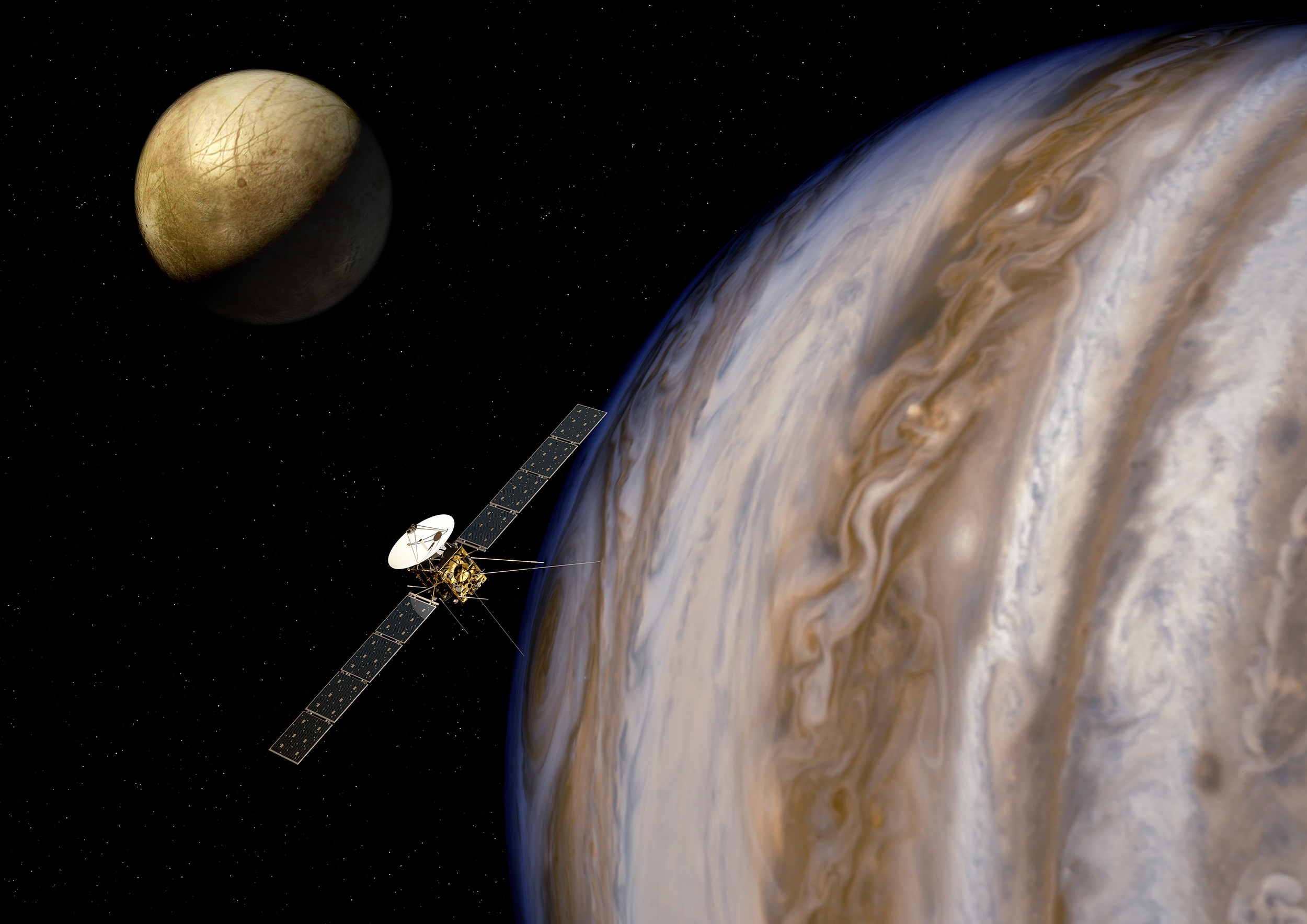
Now less than one year until the projected launch date, ESA’s JUICE mission is in the final phases of development. The JUpiter ICy moons Explorer (JUICE) is now fully built with all ten instruments integrated into the spacecraft bus. Next comes all-up testing in a full flight configuration.
Launch is currently scheduled for April of 2023, with the mission slated to conduct detailed investigations of Jupiter and its system of moons, focusing on Europa, Callisto and especially Ganymede.
Continue reading “ESA's Juice Mission is Fully Integrated and Ready for Testing. Soon it'll fly to Space on a Mission to Jupiter's Moons”Ganymede Casts a Long Shadow Across the Surface of Jupiter
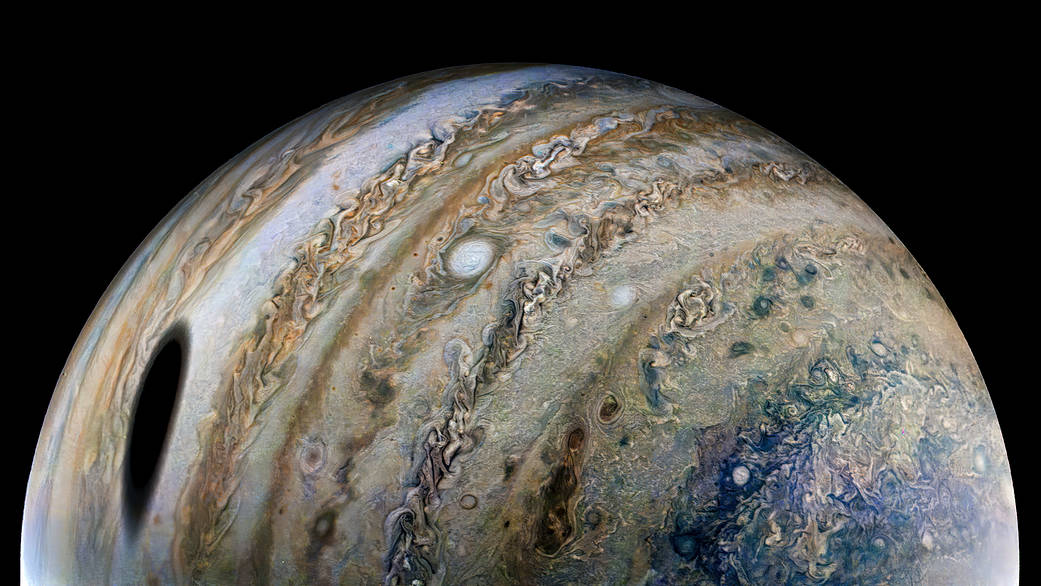
What is that large dark smudge on Jupiter’s side? It may remind you of a certain scene from the sci-fi film “2010: The Year We Make Contact,” where a growing black spot appears in Jupiter’s atmosphere.
But this is a real photo, and the dark spot is just an elongated shadow of Ganymede, Jupiter’s largest moon. Just like when Earth’s Moon crosses between our planet and the Sun creating an eclipse for lucky Earthlings, when Jupiter’s moons cross between the gas giant and the Sun, they create shadows too.
Continue reading “Ganymede Casts a Long Shadow Across the Surface of Jupiter”Jupiter’s Moon Io has Dunes. Dunes!?
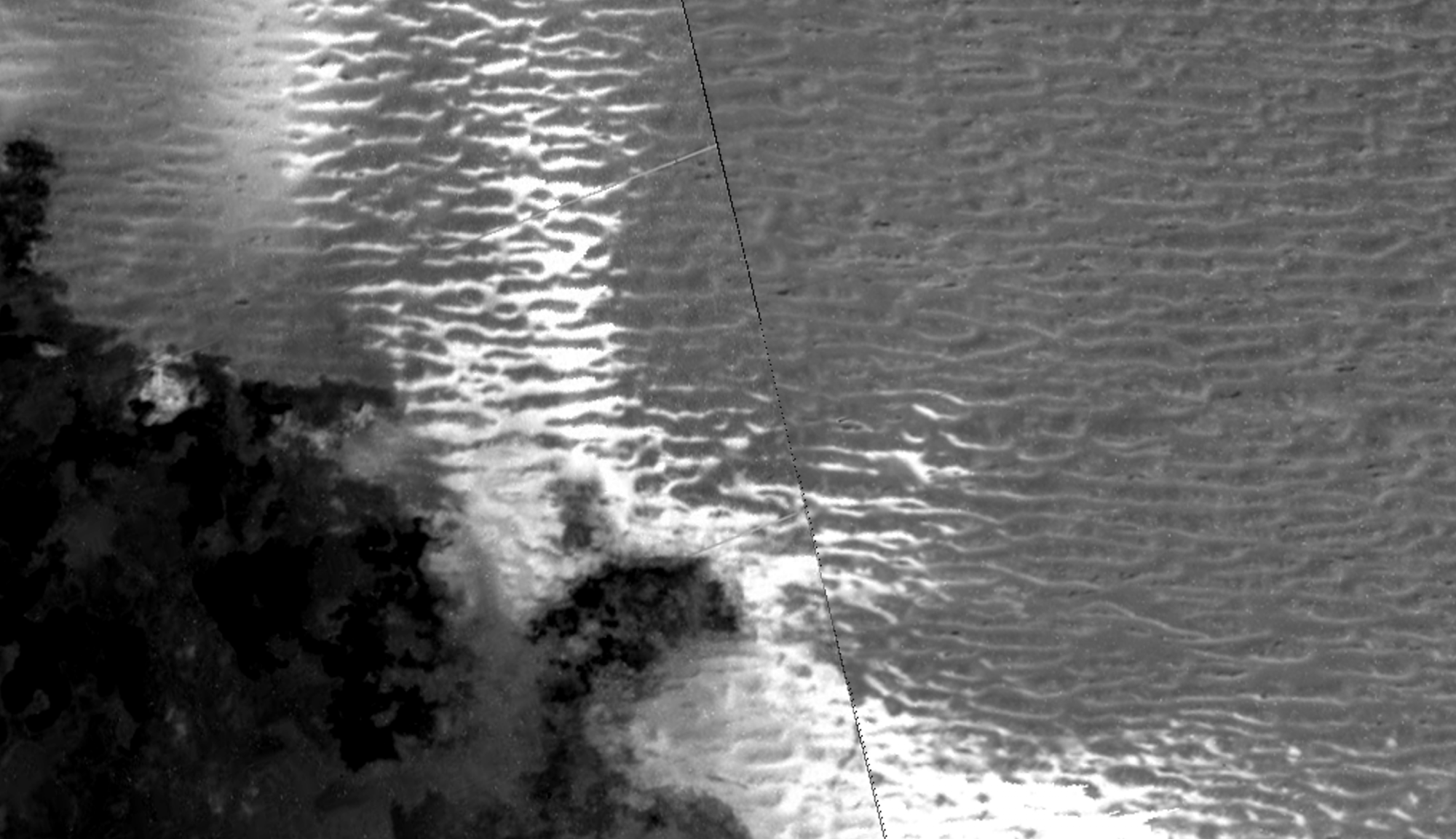
Within Jupiter’s massive system of satellites, four large moons really stand out. They’re known as the “Galilean Moons” in honor of Galileo Galilee, who made the first recorded observations of them in 1610. The innermost of these moons is the rocky moon Io, which is slightly larger than Earth’s Moon and slightly denser. With more than 400 active volcanoes on its surface, it is the most geologically active body in the Solar System.
Add to that the intense radiation it gets from Jupiter’s magnetic field, and it’s arguably one of the most hellish environments in the Solar System! Nevertheless, scientists have long been puzzled by the meandering ridges visible on the surface, which are as large as any seen here on Earth. Thanks to a recent study led by Rutgers University, there’s now an explanation for how these formations can exist on a surface as icy and volcanic as Io’s.
Continue reading “Jupiter’s Moon Io has Dunes. Dunes!?”Jupiter and Ganymede are Connected by Magnetic Fields
On July 5th, 2016, NASA’s Juno spacecraft arrived at Jupiter and began its four-year mission (which has since been extended to 2025) to study the gas giant’s atmosphere, composition, magnetosphere, and gravitational environment. Juno is the first dedicated mission to study Jupiter since the Galileo probe studied the system between 1995 and 2003. The images and data it has sent back to Earth have revealed much about Jupiter’s atmosphere, aurorae, polar storms, internal structure, and moons.
In addition, the Juno mission has allowed astronomers to learn more about how magnetic interaction between some of Jupiter’s moons and its atmosphere leads the gas giant to experience aurorae around its northern and southern poles. After analyzing data from Juno’s payload, a team of researchers from the Southwest Research Institute (SwRI) observed how streams of electrons from Ganymede (Jupiter’s largest moon) leave an “auroral footprint” in Jupiter’s atmosphere.
Continue reading “Jupiter and Ganymede are Connected by Magnetic Fields”Just Look at the Jaw-Dropping Detail of These Storms on Jupiter
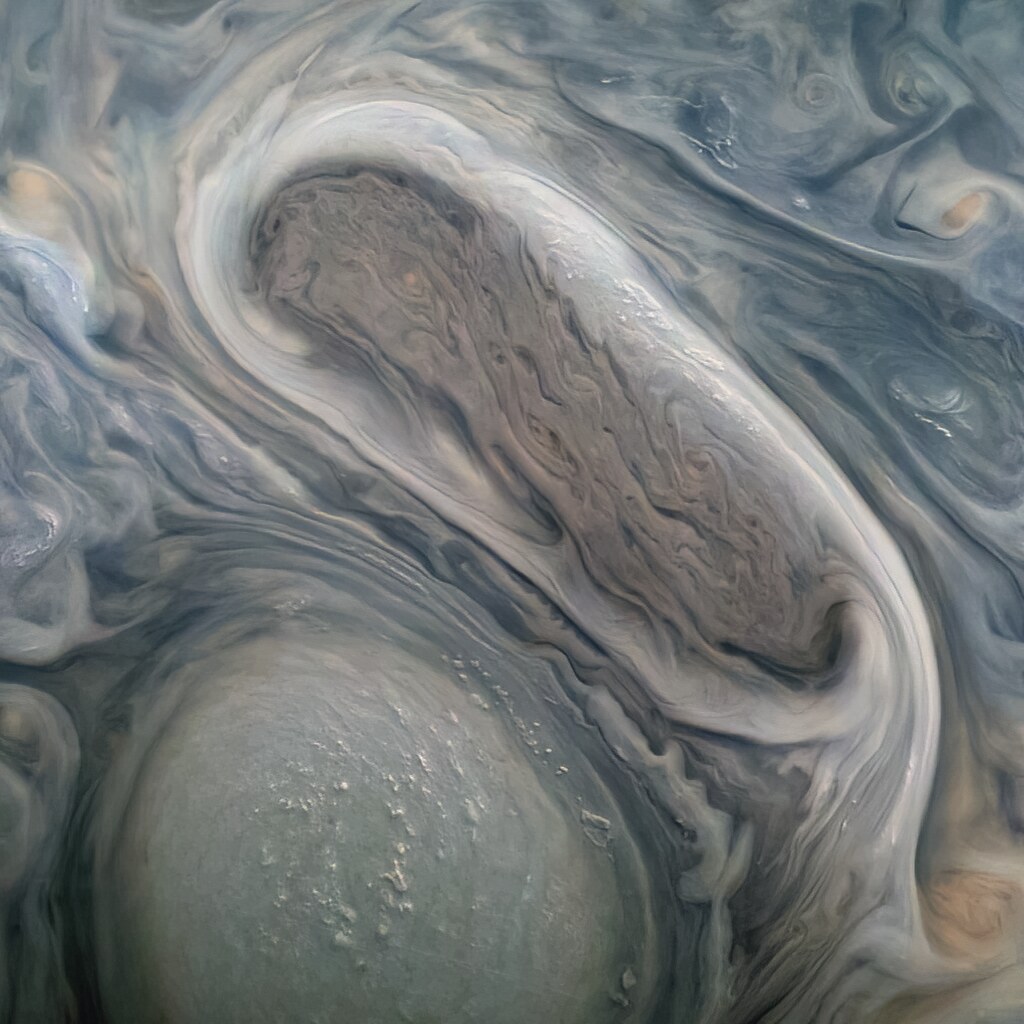
The latest images from the Juno mission at Jupiter includes views of giant storms and vortexes on the gas giant world in amazing detail.
Continue reading “Just Look at the Jaw-Dropping Detail of These Storms on Jupiter”
